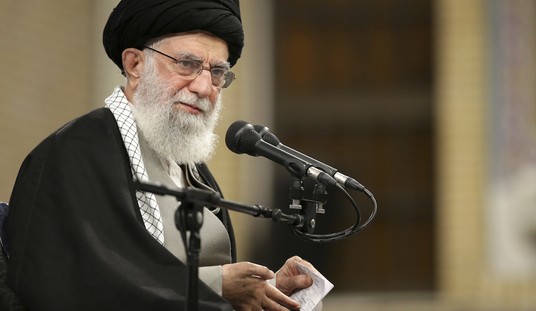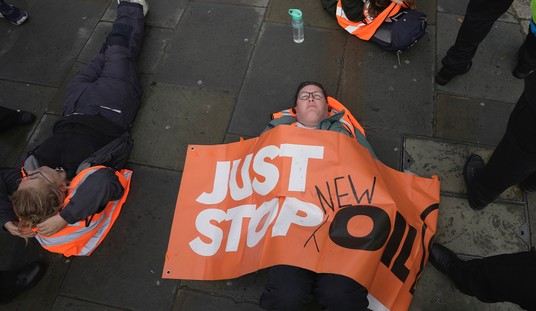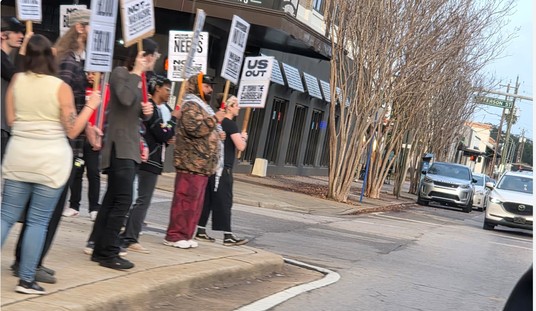Did the economy go into hyperdrive in November, and did we all miss it? The US economy turned in a solid performance in job creation last month, with the BLS reporting a boost in employment by 228,000 jobs. That beat expectations from economists of a 200K increase, but wages still seem to be lagging.
Nevertheless, Reuters believes that this report negates the impetus for tax reform:
Total nonfarm payroll employment increased by 228,000 in November, and the unemployment rate was unchanged at 4.1 percent, the U.S. Bureau of Labor Statistics reported today. Employment continued to trend up in professional and business services, manufacturing, and health care.
The unemployment rate held at 4.1 percent in November, and the number of unemployed persons was essentially unchanged at 6.6 million. Over the year, the unemployment rate and the number of unemployed persons were down by 0.5 percentage point and 799,000, respectively. …
The labor force participation rate remained at 62.7 percent in November and has shown no clear trend over the past 12 months. The employment-population ratio, at 60.1 percent, changed little in November and has shown little movement, on net, since early this year.
The workforce participation numbers remain stubbornly low, well below the 64.7% of June 2009, the beginning of the recovery from the Great Recession. Those working part-time for economic reasons increased in November, and the numbers of unemployed and those not in the labor force both rose slightly in the Household survey. However, most of the unemployed added in November were either new entrants or re-entrants to the workforce, a positive sign of increasing labor demand.
The employment number looks fairly strong, if something less than a breakout level. All of the goods-producing sectors increased employment, as did most of the service sectors. Retail added 18,700 jobs, likely to be seasonal as we move into the Christmas holidays, but professional services added 46,000 and education/health care added 54,000, so the job creation looks mostly permanent rather than seasonal.
It’s a solid if not spectacular result, and Reuters leads off its analysis by suggesting that Republicans drop their tax reform efforts:
U.S. job growth increased at a strong clip in November and wages rebounded, painting a portrait of a healthy economy that analysts say does not require the kind of fiscal stimulus that President Donald Trump is proposing. …
The upbeat report underscored the economy’s strength and could fuel criticism of efforts by Trump and his fellow Republicans in the U.S. Congress to slash the corporate income tax rate to 20 percent from 35 percent.
“The labor market is in great shape. Tax cuts should be used when the economy needs tax cuts and it doesn’t need tax cuts right now,” said Joel Naroff, chief economist at Naroff Economic Advisors in Holland, Pennsylvania.
“When politics and economics are mixed in the stew, the policies that are created often have a very awful smell,” Naroff said before the report was published.
Just how “great” a shape is the labor market in? Reuters jollies up the trend in wages, but as the AP’s Christopher Rugaber notes, the data doesn’t quite support it. While wages edged up last month, the overall trend isn’t delivering as one would expect:
The economy is expanding at a healthy pace, and in many cases employers are scrambling to hire enough qualified workers. Over the past six months, economic growth has exceeded an annual rate of 3 percent, the first time that’s happened since 2014. Consumer confidence has reached its highest level since 2000.
Still, solid hiring and a low unemployment rate have yet to accelerate wages, which rose 2.5 percent in November compared with a year earlier. The last time unemployment was this low, average wages were growing at a 4 percent annual rate.
What does that tell us? It suggests that while job creation has been outpacing population growth, it’s not growing fast enough to have brought all the sidelined workers back into the job market yet. Employers see enough slack in labor-market competition to keep wages relatively steady.
Actually, employment growth has slowed slightly in 2017, down to an average 174,000 per month this year compared to 187,000 per month in 2016, as Reuters points out. They explain that as a natural trend for an economy that is reaching “full employment,” but if that was the case, then demand for labor should be pushing wages up much faster than we’re seeing now. The lack of movement in the workforce participation appears to accurately indicate an economy that’s still in maintenance-plus mode, not experiencing a boom.
Whether the GOP tax reform bill will provide the kind of stimulus necessary to break us out of that mode is still an open question. Americans clearly want to see more job creation and especially higher wage growth, so don’t expect the Trump administration or Republican leadership to declare victory and depart the field on tax reform. With that in mind, the White House should refrain from claiming success with every jobs report; instead, keep the pressure on Congress to act by focusing on the realities of this jobs market.








Join the conversation as a VIP Member